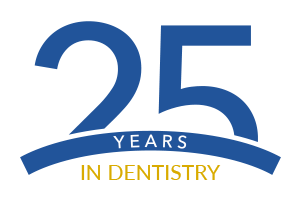Periodontal disease is a fairly common condition that may lead to tooth loss. There are two main types: gingivitis and periodontitis. Gingivitis is less serious, but more common than periodontitis, occurring in about 50% of Americans.
OralDNA® Labs – The Key to Better Health
What is periodontal disease?
What causes periodontal disease?
Bacteria and inflammation cause periodontal disease.
Gingivitis begins with a buildup of plaque on the teeth. Plaque is made up of bacteria, food particles, and mucus. If plaque is not brushed away, it hardens into tartar that gets stuck on the teeth. The bacteria in plaque and tartar trigger inflammation of the gums. This is why periodontal disease is commonly called gum disease. The gum can pull away from the teeth, forming pockets between the tooth and the gum.
Bacteria grow in these pockets and the inflammation spreads to the ligaments and bone that hold the teeth in place. This stage is called periodontitis. If the inflammation continues, the gums, ligaments, and bone are destroyed and teeth fall out.
Gingivitis does not always progress to periodontitis. There are many factors that determine whether or not that happens.
What are the symptoms of periodontal disease?
People with periodontal disease may have:
- Red and/or shiny gums
- Gums that bleed easily
- Gums that hurt when touched
People with more severe disease may also have :
- Swollen gums
- Bad breath
- Loose teeth
Are you at risk?
Everyone has bacteria in their mouth, but not everyone gets periodontal disease.
The following factors increase your chances of getting it:
- High amounts of disease-causing bacteria
- Poor oral hygiene
- Smoking tobacco
- Stress (teeth grinding or clenching)
- Poor diet
- Other medical conditions
- Diabetes
- Heart disease
- Obesity
- Pregnancy
- Rheumatoid arthritis
- Osteoporosis/ osteopenia
- Certain medications
- Genetic (DNA) makeup
What should you do if you have concerns about periodontal disease?
Practice good oral hygiene by brushing your teeth and flossing every day. Be sure to go to the dentist regularly to get your teeth cleaned and examined. Talk with your dentist or dental hygienist about periodontal disease.
How can OraLDNA® Labs help?
OralDNA Labs offers two tests that your oral healthcare professional might elect to use. The MyPerioPath® test finds out which bacteria are triggering periodontal disease, which differs from patient to patient. The MyPerioiD® test can tell if a patient has specific changes in his/her DNA that might mean the patient is at greater risk of more serious disease. The information provided by these tests helps the dentist or periodontist select a treatment plan that’s right for each patient. These tests are simple, painless, and easy to perform using a saliva sample. The patient simply swishes a saline solution in his/her mouth and spits it into a tube. The sample is then sent to OralDNA Labs, where the test is performed. After testing, results are sent to your dentist’s or periodontist’s office. For more information, visit www.oraldna.com.






